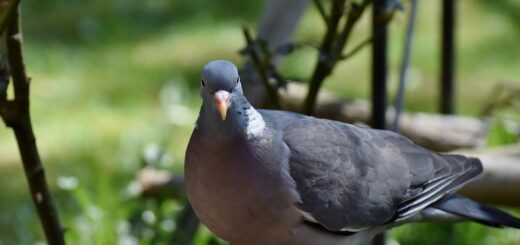Raven
The Mysterious Raven
For centuries, the raven has been a symbol of mystery, intelligence, and power. Found in various cultures and mythologies around the world, this enigmatic bird has captured the imagination of people from all walks of life. In this article, we’ll explore the significance of the raven in different cultures, its behavior and characteristics, and its portrayal in literature and popular culture.
Raven in Mythology and Folklore
The raven holds a significant place in the mythology and folklore of many cultures. In Norse mythology, the raven is associated with the god Odin and is often seen as a symbol of wisdom and knowledge. According to legend, Odin is accompanied by two ravens, Huginn and Muninn, who serve as his messengers and keepers of knowledge. In Native American folklore, the raven is often depicted as a trickster figure, using its intelligence and cunning to outwit others. In some cultures, the raven is seen as a symbol of death and darkness, while in others it is revered as a symbol of protection and guidance.
One of the most famous references to the raven in literature is found in Edgar Allan Poe’s poem The Raven. In this haunting poem, the raven is a symbol of death and mournful remembrance, adding to the eerie atmosphere of the narrative. The poem’s refrain of Nevermore has become synonymous with the raven’s ominous presence, cementing its place in popular culture.
Behavior and Characteristics
Ravens are highly intelligent birds, known for their problem-solving abilities and complex social behaviors. They are capable of using tools, mimicking human speech, and even playing games. Their intelligence has made them a subject of fascination for scientists and researchers, who continue to study their behaviors and cognitive abilities.
One of the most striking features of the raven is its glossy black plumage and large size. With a wingspan of up to 4 feet, the raven is an imposing bird that commands attention wherever it goes. Its distinctive call, a deep croaking sound, adds to its mysterious and haunting presence.
Raven in Popular Culture
The raven has long been a popular symbol in literature, art, and popular culture. Its association with mystery and magic has made it a popular motif in Gothic literature and art, where it is often used to convey a sense of darkness and foreboding. In popular culture, the raven has been featured in countless books, movies, and television shows, often as a symbol of intelligence and cunning.
One of the most iconic representations of the raven in popular culture is found in the television series Game of Thrones, where the three-eyed raven serves as a mystical and enigmatic guide to the protagonist, Bran Stark. The raven’s ability to see the past, present, and future adds to its aura of mystery and intrigue, captivating audiences around the world.
Conservation and Threats
Despite their widespread presence in mythology and popular culture, ravens face numerous threats in the wild. Loss of habitat, persecution by humans, and exposure to toxins are some of the main challenges facing raven populations. Conservation efforts aimed at protecting their habitats and raising awareness about the importance of these birds are crucial for their survival.
Ravens are also susceptible to the impacts of climate change, which can disrupt their breeding and foraging patterns. As such, it is important for conservationists and policymakers to take proactive measures to mitigate the effects of climate change and ensure the long-term survival of raven populations.
Conclusion
The raven’s enduring presence in mythology, folklore, and popular culture is a testament to its captivating and enigmatic nature. Whether revered as a symbol of wisdom and knowledge or feared as a harbinger of doom, the raven continues to fascinate and inspire people around the world. As we continue to learn more about these remarkable birds, it is essential that we work towards ensuring their conservation and protection for future generations to appreciate and admire.

